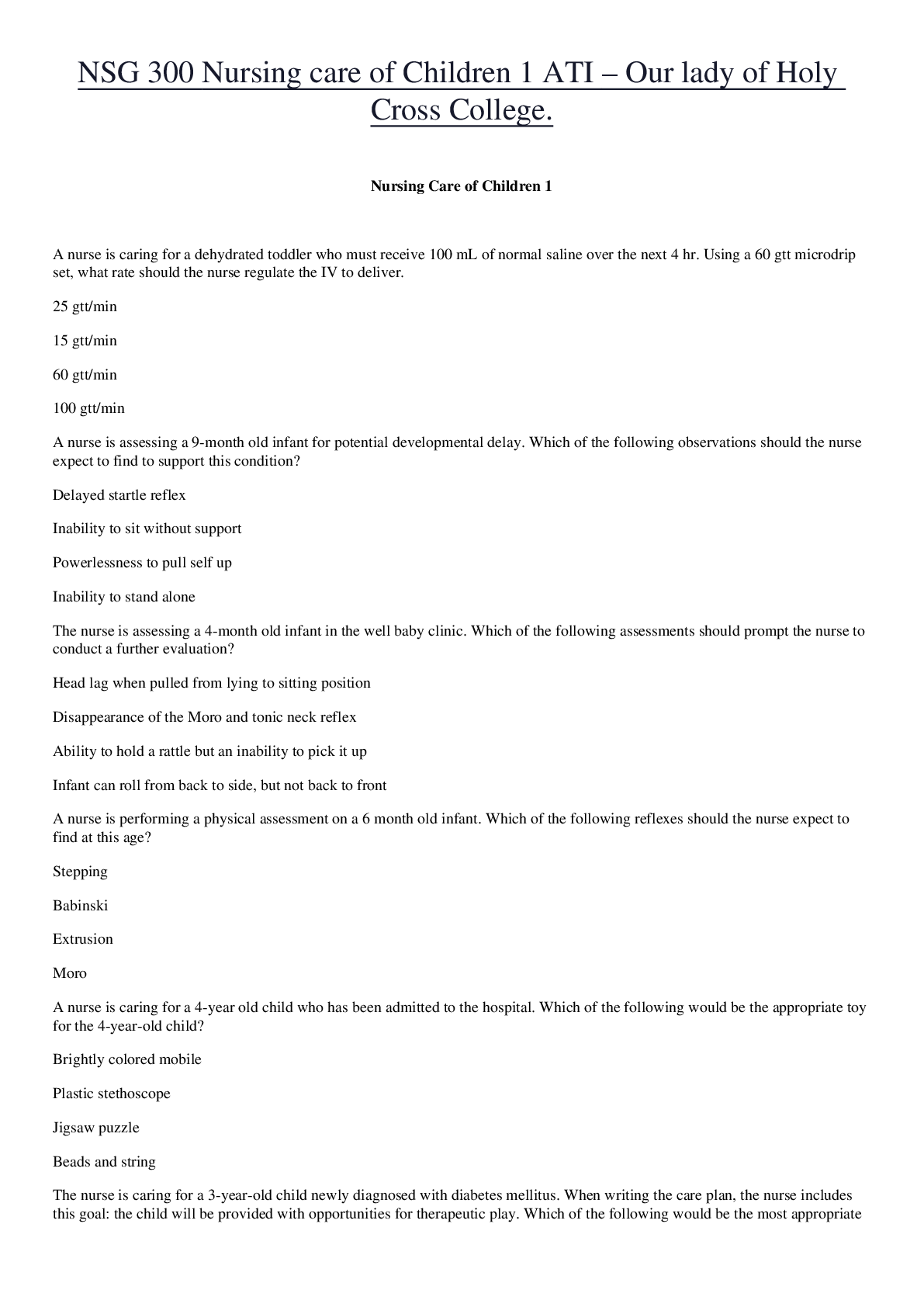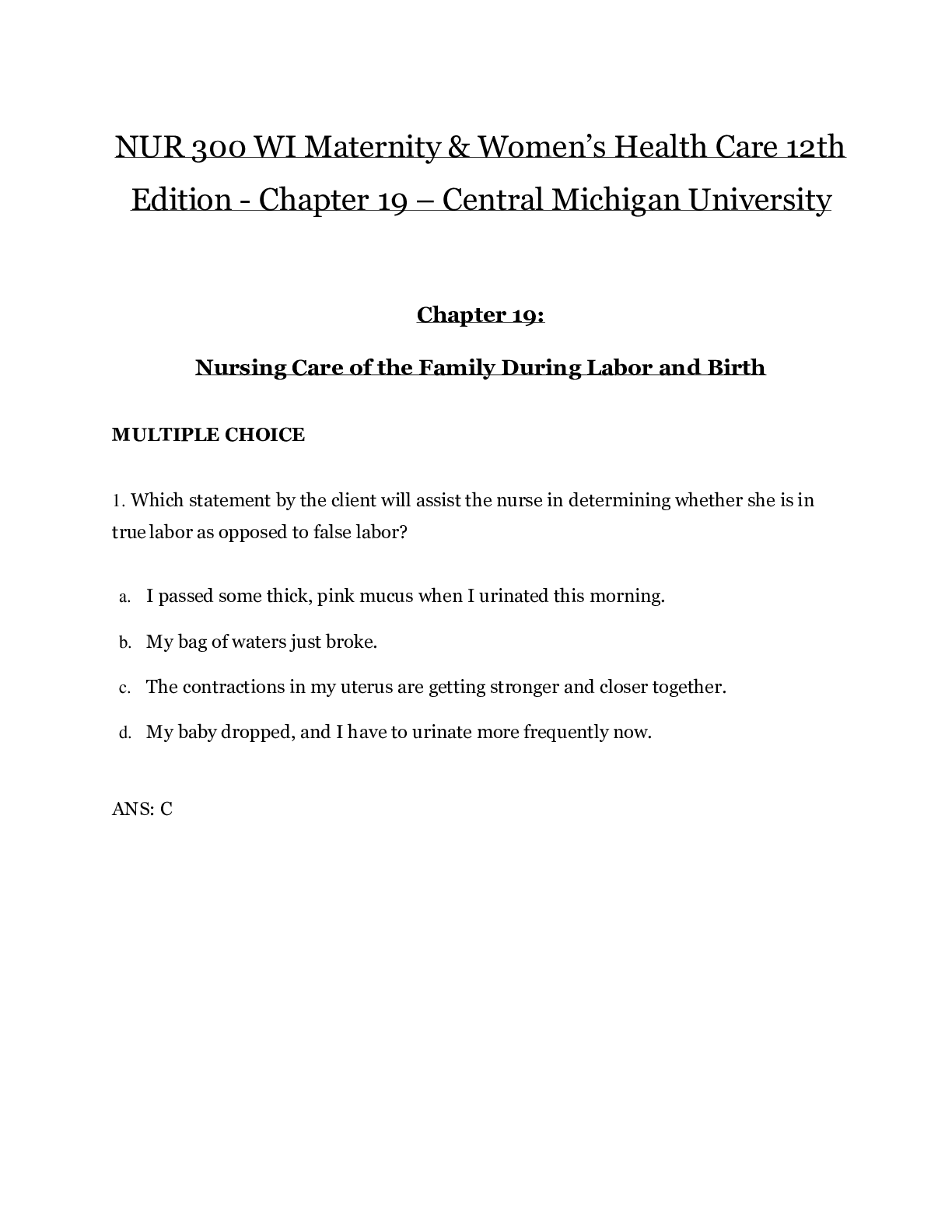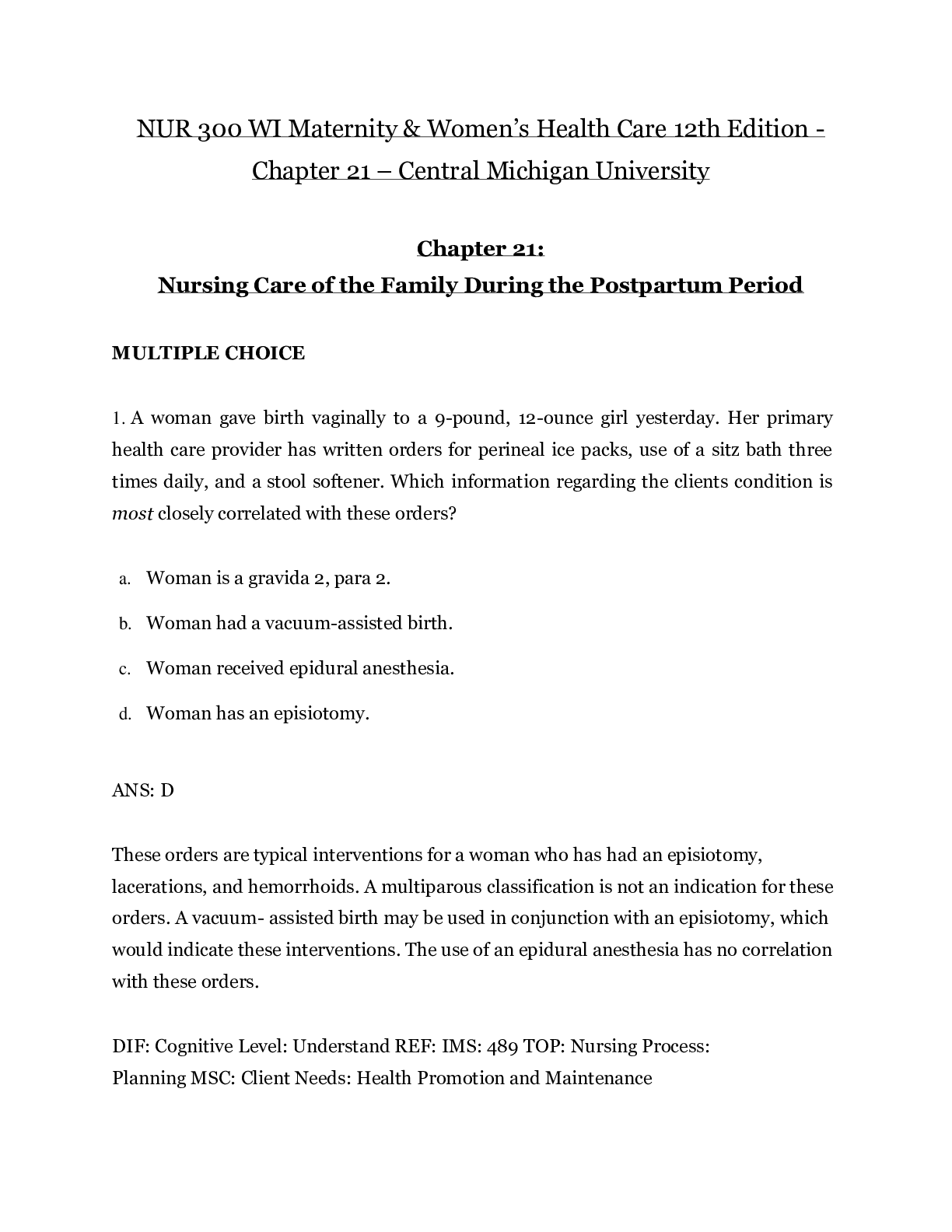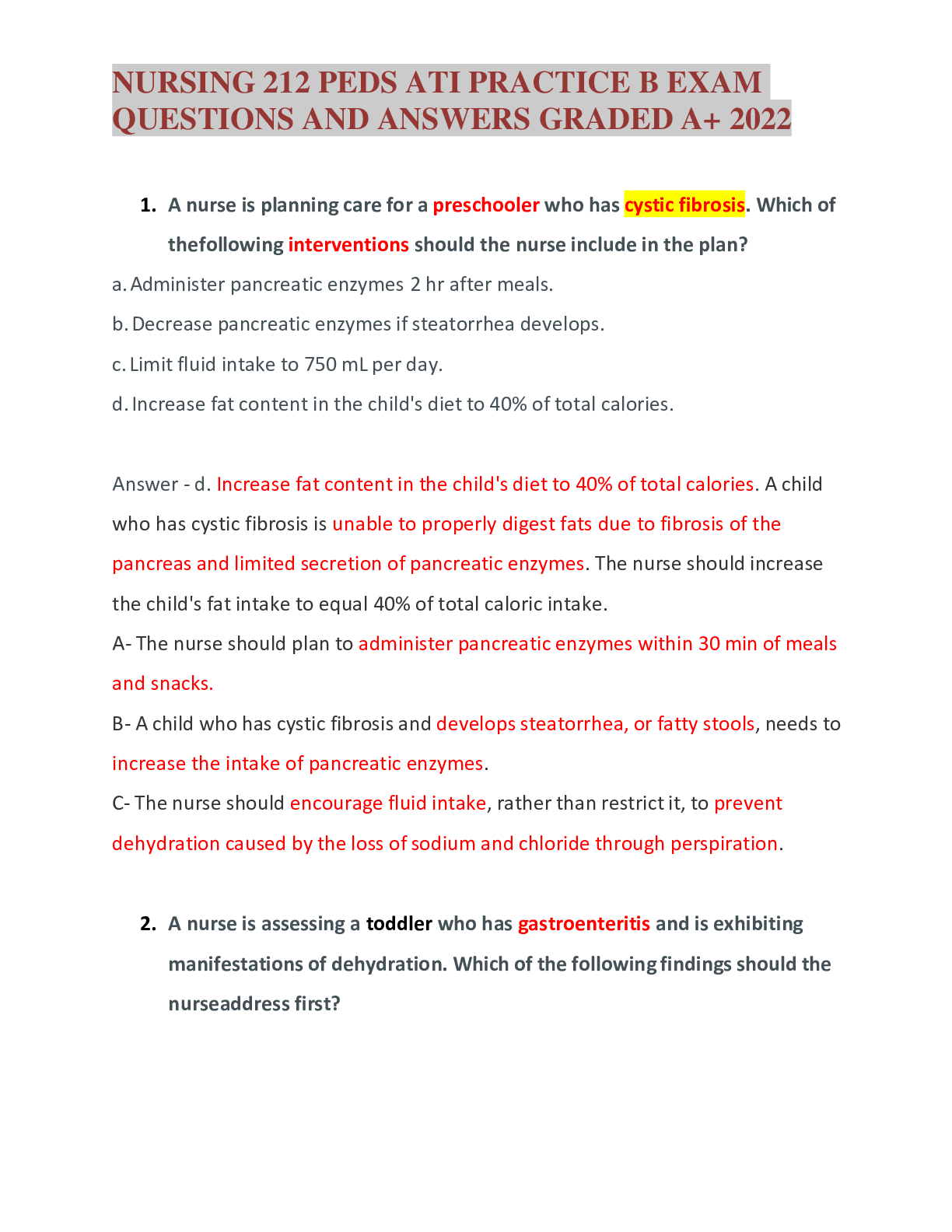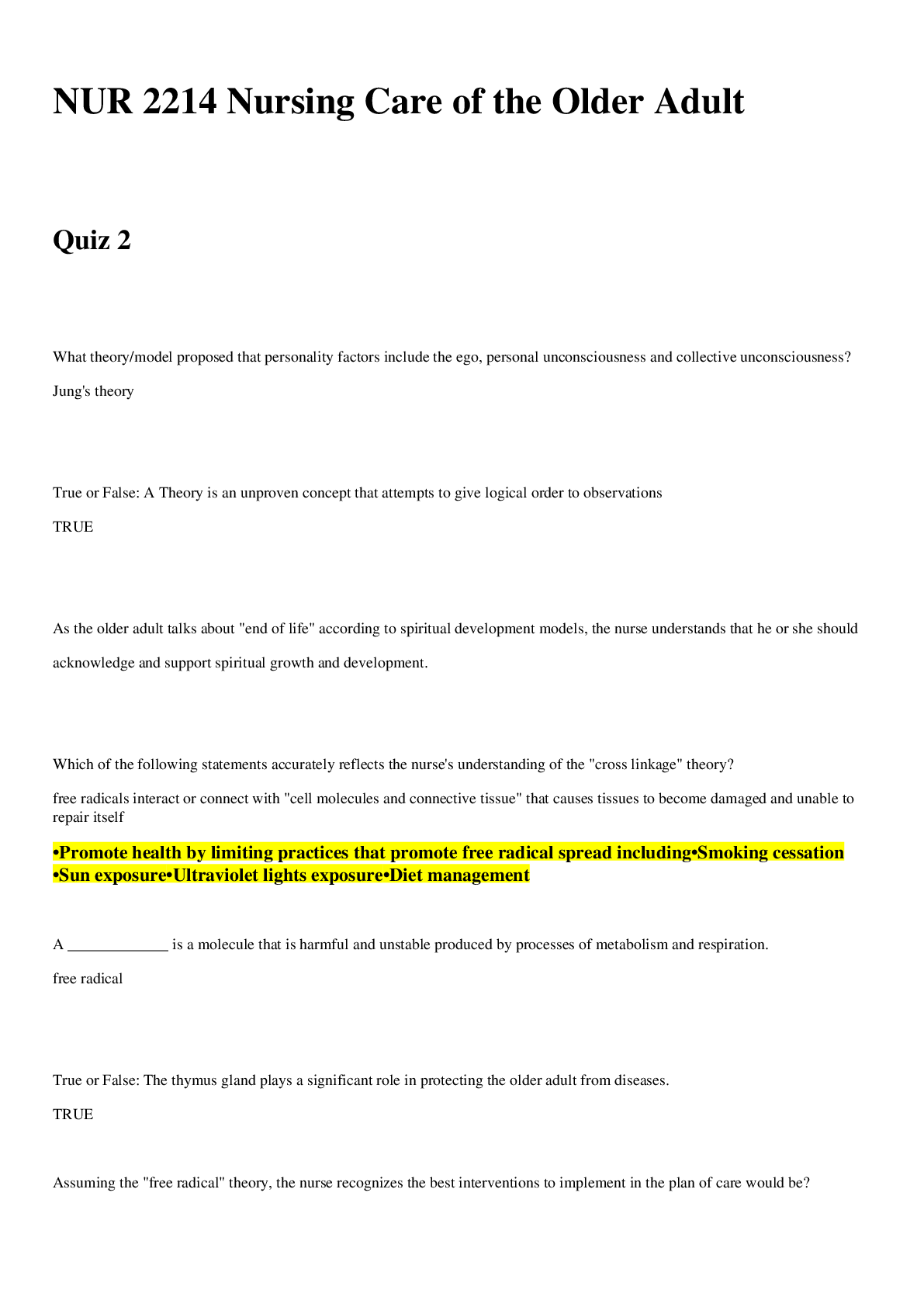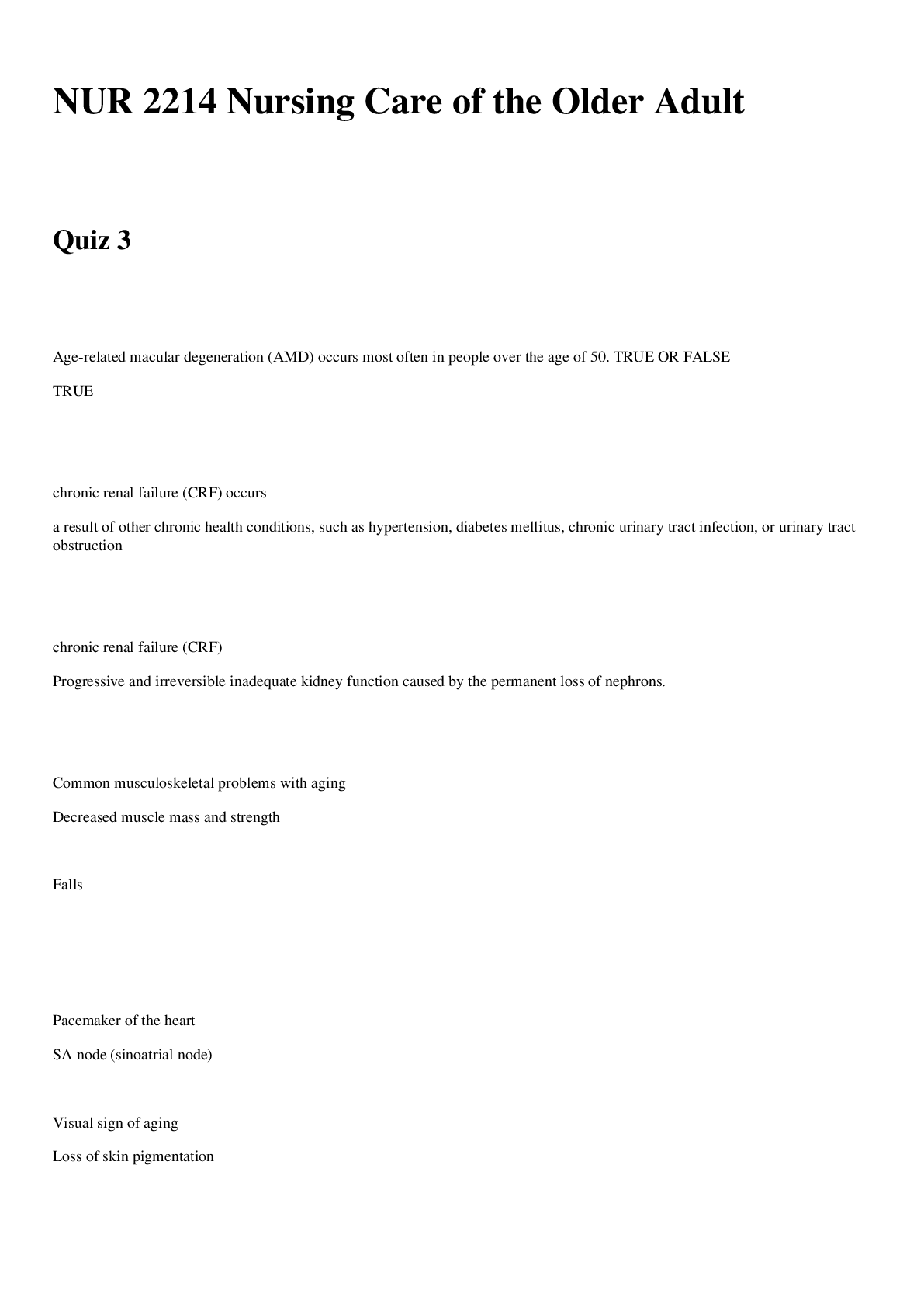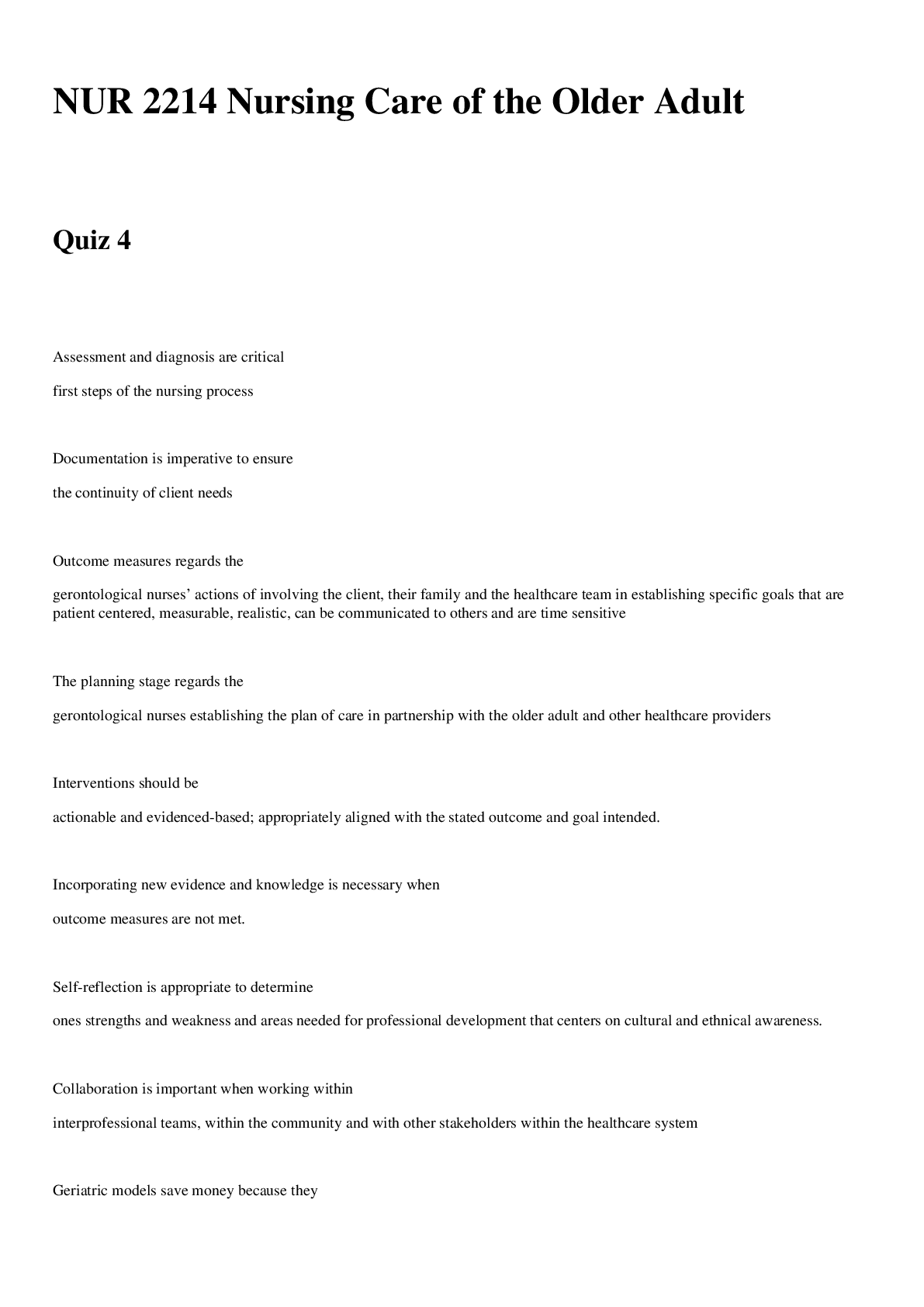*NURSING > EXAM > Chapter 48- Nursing Care of the Child With an Endocrine or Metabolic Disorder,100% CORRECT (All)
Chapter 48- Nursing Care of the Child With an Endocrine or Metabolic Disorder,100% CORRECT
Document Content and Description Below
. You care for a 10-year-old boy with growth hormone deficiency. Which therapy would you anticipate will be prescribed for him? A) Short-term aldosterone provocation. B) Intramuscular injections ... of growth hormone. C) Oral administration of somatotropin. D) Long-term blocking of beta cells. 2. The nursing diagnosis most applicable to a child with growth hormone deficiency would be A) Risk for situational low self-esteem related to short stature. B) Ineffective tissue perfusion related to infantile blood vessels. C) Impaired skin integrity related to overproduction of melanin. D) Risk for self-directed violence related to oversecretion of epinephrine. 3. A newborn is born with hypothyroidism. A complication of this disorder if it is not recognized and treated is A) blindness. B) muscle spasticity. C) dehydration. D) cognitive impairment. 4. When discussing care of an infant with congenital hypothyroidism, you would stress that the infant will need A) administration of vitamin C until after growth is complete. B) an increased intake of calcium beginning in infancy. C) administration of levothyroxine for a lifetime. D) vitamin K administration until school age. 5. A newborn was diagnosed as having hypothyroidism at birth. Her mother asks you how the disease could be discovered this early. Your best answer would be A) hypothyroidism is usually detected at birth by the child's physical appearance. B) children have a typical rash at birth that suggests the diagnosis. C) a simple blood test to diagnose hypothyroidism is required in most states. D) her child is already severely impaired at birth, and this suggests the diagnosis. 6. A school-age girl is diagnosed as having Cushing's syndrome from long-term therapy with oral prednisone. This means that the child A) appears pale and fatigued. B) has purple striae on her abdomen. C) is excessively tall for her age. D) has hypoglycemia. 7. A 12-year-old girl is diagnosed with hyperthyroidism. What problem do you anticipate she may have in school? A) Inability to submit neat handwriting assignments. B) Increase in sleepiness by the end of the day. C) Noncomprehension of written material. D) Inability to fit legs under a school desk. 8. A newborn girl is discovered to have congenital adrenogenital hyperplasia. When assessing her, you would expect to find which physical characteristic? A) Small for gestational age. B) Abnormal facial features. C) Enlarged clitoris. D) Divergent vision. 9. When discussing congenital adrenogenital hyperplasia with a child's parents, you would advise them that administration of which of the following drugs will probably be indicated? A) Calcium. B) Vitamin D. C) Hydrocortisone. D) Growth hormone. 10. In the salt-losing form of congenital adrenogenital hyperplasia, the most important observation you would make in a newborn would be for A) excessive cortisone secretion. B) dehydration. C) hypoglycemia. D) bleeding tendencies. 11. A boy is diagnosed with diabetes insipidus. You advise his parents that their son will A) have an excessive urinary output. B) grow faster than the average child. C) need insulin administered daily beginning with early infancy. D) need growth hormone administered daily beginning with early adolescence. 12. Which of the following occurrences would assure you that a child with diabetes insipidus is responding favorably to medical therapy? A) Urine specific gravity of 1.015. B) An increase in daily urine output. C) A decrease in the number of white cells in the urine. D) A blood sugar of 120 mg/dL or higher. 13. A 7-year-old is diagnosed as having type 1 diabetes. One of the first symptoms usually noticed by parents when this illness develops is A) loss of weight. B) craving for sweets. C) severe itching. D) swelling of soft tissue. 14. After hospital discharge, the mother of a child newly diagnosed with type 1 diabetes mellitus telephones you because her daughter is acting confused and very sleepy. Which emergency measure would you suggest the mother carry out before she brings the child to see her doctor? A) Give her one unit of regular insulin. B) Give her a glass of orange juice. C) Give her nothing by mouth so that a blood sugar can be drawn at the doctor's office. D) Give her a glass of orange juice with one unit regular insulin in it. 15. Which of the following situations is likely to precipitate a hypoglycemic reaction in a child with diabetes mellitus? A) Participation in a soccer game. B) Eating a high-carbohydrate lunch. C) Developing an upper respiratory infection. D) Forgetting to take insulin. 16. You teach a child with type 1 diabetes mellitus to administer her own insulin. She is receiving a combination of a short-acting and a long-acting insulin. You know that she has appropriately learned the technique when she A) administers the insulin into a doll at a 30-degree angle. B) draws up the short-acting insulin into the syringe first. C) wipes off the needle with an alcohol swab. D) administers the insulin intramuscularly into rotating sites. 17. Which of the following nursing diagnoses would be most applicable to a child with recently diagnosed type 1 diabetes mellitus? A) Impaired gas exchange related to pulmonary involvement. B) Ineffective tissue perfusion related to obstruction in blood vessels. C) Risk for impaired skin integrity related to poor healing ability. D) Deficient fluid volume related to excessive urine volume. 18. A newborn is diagnosed as having hypocalcemia. A symptom of this is A) jitteriness. B) excessive sleepiness. C) constipation. D) a distended abdomen. 19. A 3-year-old you meet has phenylketonuria. Which of the following foods would you question if you saw it on his lunch tray? A) A dish of pears. B) Chocolate pudding. C) Lettuce leaves. D) Orange juice. 20. A 7-year-old is diagnosed with type 1 diabetes. Many labs are drawn at the time of diagnosis. One lab test that is specific to this type of diabetes is: A) Arterial blood gases. B) BUN. C) Ammonia level. D) Glycosylated hemoglobin. 21. An insulin infusion was initiated on a child with diabetic ketoacidosis. What additional infusion additive would the nurse also possibly give? A) Potassium. B) Sodium. C) Glucose. D) Bicarbonate. [Show More]
Last updated: 1 year ago
Preview 1 out of 10 pages
.png)
Buy this document to get the full access instantly
Instant Download Access after purchase
Add to cartInstant download
We Accept:

Reviews( 0 )
$13.00
Document information
Connected school, study & course
About the document
Uploaded On
Dec 11, 2020
Number of pages
10
Written in
Additional information
This document has been written for:
Uploaded
Dec 11, 2020
Downloads
0
Views
98
.png)













